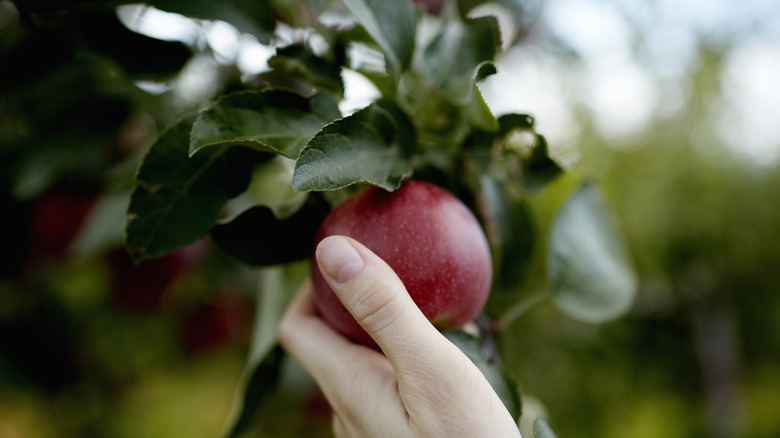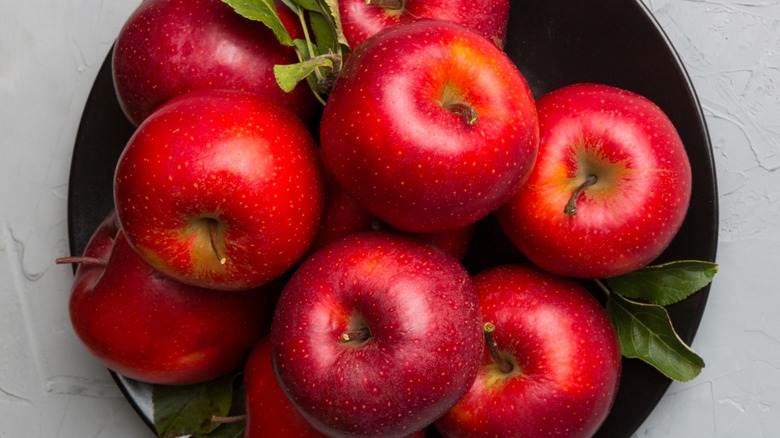How Liberty Apples Got Their Patriotic Name
Freedom can be associated with something as complex as a liberated country, or as simple as a child with unrestricted bounds in a playground. The word comes with a range of connotations, but it always means being free from something. In the case of Liberty apples, it was freedom from plant disease. In 1972, the apple cultivar 'Liberty' was first introduced to the public by professional and aspiring scientists at the New York Agricultural Experiment Station in Geneva. The Cornell University-run site opened in 1880 and has been used to research and develop foods for the public ever since.
The purpose of the Liberty apple was to create an apple tree that was resistant to some of the fruit trees' most common diseases, including fire blight, apple scab, and powdery mildew. Fire blight is an unpredictable infection that can cause parts of, or whole, apple trees to die either in a single season or over the course of a few seasons. And apple scab is a highly-spreadable airborne fungal disease that can live through the off-season on apple trees. Finally, powdery mildew is a fungal disease that causes cosmetic and texture issues and can carry between seasons.
All these diseases can bear unfortunate results for farmers, but the Liberty apple, a combination of the 'Macoun' and 'Purdue 54-12' cultivars, resists these diseases. While not one of the most popular types of apples, Liberties are easy to grow, making them a good starter tree for a new farmer. Just be careful when you pick them: Their window of ripeness is short, and they only last for about two months after harvesting.
The best uses for Liberty apples
You know the history of the Liberty apple, but what can you even do with them? Because the Macoun cultivar is an offspring of McIntosh apples, Liberty apples have a slightly sour, but mostly sweet, taste. Physically, they are marked by a deep red skin that covers a yellowish inside. This cream-colored inside has a crisp, crunchy texture with a perfect bite. Liberty apples are great for many things, including a simple snack.
They have a delicious taste and texture that's great for fresh eating; for the best taste, let them sit in their flavors for a month to ripen to perfection. These apples are also good to use in dessert recipes across the board. For a classic dessert, try this Dutch apple pie recipe (that's complemented by a sugar cookie crust). If you're not a fan of pies or you want an easier dessert, try this apple crostata, a treat similar to an apple tart. And for a cakier treat, try these apple fritters or this apple cider donut Bundt cake.
If desserts aren't your thing, these apples are great for savory recipes as well. Try adding Liberty apples to your next salad — the crunch of the apple pairs well with both crispy and leafy greens, and the tart sweetness of the fruit complements a balsamic dressing perfectly. For a main meal, try the classic American dish of pork chops, either cooked with apples or served with homemade Liberty apple applesauce. Whatever you do, be sure to take advantage of these delicious apples while they're in season.

